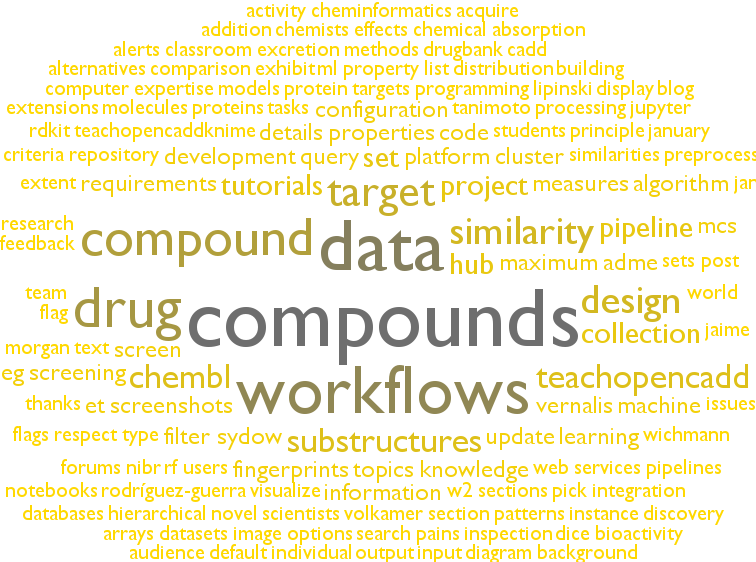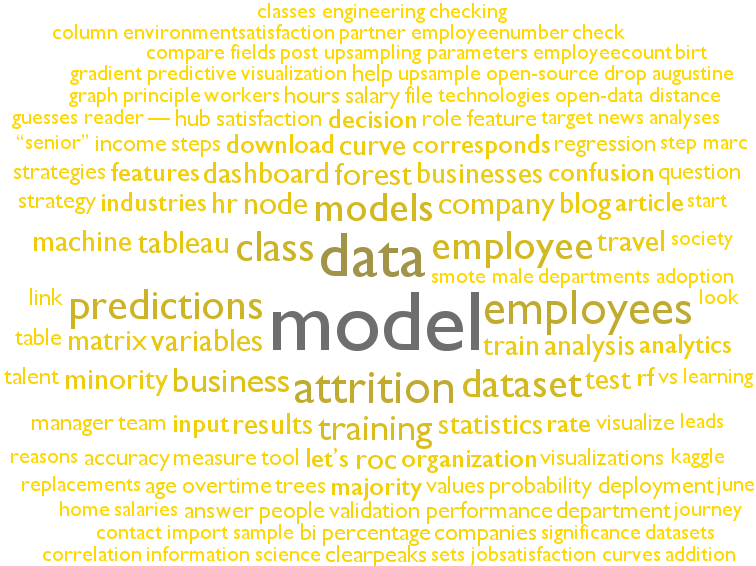The first month of a new year is also a time for looking back at the old one and reviewing what happened. We especially wanted to find out which articles were most popular in 2020. The authors behind the blog overall were busy, producing over 70 articles - which we publish each Monday and Thursday. The articles cover a pretty wide range of topics as depicted in the word cloud in our header image: "Data” is an obvious one, but it’s great to see how versatile KNIME Analytics Platform is, reflected in the word cloud!
In today’s post, we’d like to say thank you to all contributors to our blog and highlight the top three most popular articles written by external authors that you, the readers, liked the most.
- BERT Text Classification for Everyone, by Nadjet Bouayad-Agha and Artem Ryasik, Redfield
- Predicting employee attrition with machine learning, by the Advanced Analytics team at ClearPeaks
- Tutorials for computer-aided drug design using KNIME workflows, by Andrea Volkamer, Jaime Rodriguez-Guerra, and Dominique Sydow, Volkamer Lab, Charité Universitätsmedizin, Berlin
#3 Tutorials for computer-aided drug design using KNIME workflows

The team of authors from the Volkamer Lab, Charité Universitätsmedizin, Berlin have developed an entire collection of tutorials for computer-aided drug design (CADD): a set of eight interconnected workflows. Why did they do it? Jupyter Notebooks offer incredible potential for disseminating technical knowledge thanks to their integrated text plus live code interface. However you need coding expertise to understand how the code blocks work, therefore a visual data flow language like KNIME is better suited for the less-coding aware audience. These tutorials for computer-aided drug design show how drug design topics can be practically applied to data using Python and KNIME Analytics Platform and are also a great way of onboarding new students in the group - as a compact but detailed enough introduction is given per topic for getting started on their projects
Read about the tutorial and how they built the eight interconnected workflows here.
#2 Predicting Employee Attrition with Machine Learning

The Advanced Analytics team at ClearPeaks helps businesses leverage their data with the help of artificial intelligence and machine learning, applied to essential business use cases such as talent acquisition, pricing optimization, social listening, etc. This article walks you through an example of how machine learning models can help an organization predict employee attrition and reduce costs. The workflow that is demonstrated in the article is available for you to download and use yourself.
Read the full article here.
#1 BERT Text Classification for Everyone

Text classification is the cornerstone of many text processing applications and used in very different domains, for example opinion mining, job offer classification, or social network monitoring to spot toxic comments or fake information. This article by Nadjet and Artem specifically investigates BERT as a deep learning NLP technique and introduces the Redfield BERT Nodes - community nodes that enable you to use the BERT Python library without the need for coding. The article contains links to two example workflows, one for text classification and another for sentiment analysis.
Read the full article here.
